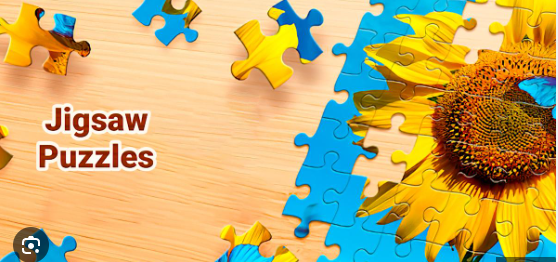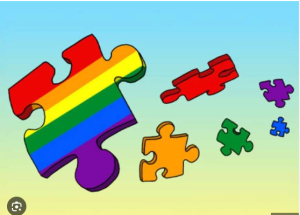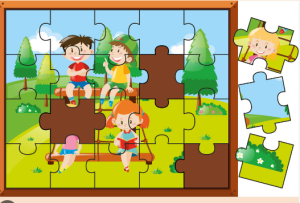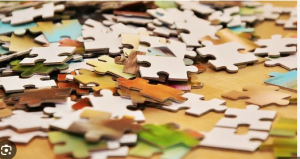Introduction: Puzzles have a unique ability to captivate and entertain people across ages and cultures. From jigsaw puzzles to crosswords, sudoku to brain teasers, these enigmatic challenges offer more than just a pastime. Delving into the psychology and allure of puzzles unveils their mesmerizing impact on individuals’ minds and why they stand as timeless sources of entertainment.
Engagement through Cognitive Stimulation Puzzles engage various cognitive faculties, stimulating critical thinking, problem-solving, and spatial reasoning skills. When confronted with a puzzle, individuals activate their brains, fostering concentration and mental agility. This engagement is not just recreational but contributes significantly to mental well-being.
The Allure of Challenges Human nature is drawn to challenges, and puzzles provide precisely that. The thrill of tackling a complex problem and gradually unraveling its solution creates a sense of accomplishment and satisfaction. The element of challenge fuels motivation, keeping individuals engaged for prolonged periods.
Relaxation and Stress Relief Surprisingly, puzzles also serve as effective stress relievers. Engaging in a puzzle activity allows the mind to shift focus from stressors, providing a form of mental relaxation. The repetitive nature of sorting pieces or deciphering clues can induce a meditative state, promoting a sense of calm and mindfulness.
Social Bonding and Collaboration Puzzles are often enjoyed in groups, fostering social interactions and bonding. Whether it’s working on a jigsaw puzzle together or collaborating to solve a challenging riddle, puzzles encourage teamwork, communication, and a sense of camaraderie, strengthening interpersonal relationships.
Variety and Personalization The diverse array of puzzles caters to individual preferences. Some prefer logic-based puzzles like sudoku, while others find joy in visual challenges like jigsaw puzzles. The ability to choose puzzles aligned with personal interests adds to the overall entertainment value.
Continuous Learning and Growth Puzzles offer a platform for continuous learning. They prompt individuals to explore new problem-solving strategies, learn from mistakes, and enhance their cognitive abilities. The iterative process of attempting puzzles nurtures a growth mindset, promoting lifelong learning.
Title: Unveiling the Enchantment of Puzzles: How They Captivate and Entertain
Introduction
- Briefly introduce the concept of puzzles and their widespread appeal.
- Highlight the universal allure of puzzles across various ages and cultures.
Section 1: The Psychology Behind Puzzle Entertainment
Cognitive Engagement
- Discuss how puzzles stimulate the brain and encourage critical thinking.
- Explain the psychological satisfaction derived from problem-solving.
Emotional Connection
- Explore how puzzles evoke feelings of accomplishment and joy upon completion.
- Highlight the emotional gratification achieved through overcoming challenges.
Section 2: Types and Varieties of Puzzles
Jigsaw Puzzles
- Detail the popularity of jigsaw puzzles and their appeal to different age groups.
- Discuss the process of assembling pieces and the satisfaction derived from completing an image.
Crossword Puzzles
- Explore the linguistic and cognitive aspects of crossword puzzles.
- Discuss the mental agility required and the joy of deciphering clues.
Logic and Mathematical Puzzles
- Highlight the allure of logic and math-based puzzles.
- Discuss the satisfaction in applying reasoning skills to solve problems.
Mechanical and 3D Puzzles
- Discuss how mechanical and 3D puzzles engage individuals in a hands-on manner.
- Describe the tactile experience and problem-solving involved.
Section 3: The Benefits of Puzzle Solving
Mental Stimulation
- Elaborate on how puzzles enhance memory, concentration, and cognitive abilities.
- Discuss their potential role in preventing cognitive decline.
Stress Relief and Relaxation
- Explain how engaging in puzzles can act as a stress-relief activity.
- Discuss the calming effect of focusing on a puzzle amidst a busy schedule.
Enhancement of Social Skills
- Discuss how puzzles facilitate bonding among family and friends during collaborative solving sessions.
- Explore the role of puzzles in fostering teamwork and communication skills.
Section 4: The Evolution of Puzzles in the Digital Age
Transition to Digital Platforms
- Discuss the shift from traditional to digital puzzles.
- Highlight the advantages and disadvantages of digital puzzle platforms.
Augmented Reality and Virtual Reality Puzzles
- Explore the immersive experiences offered by AR/VR puzzles.
- Discuss their impact on puzzle-solving dynamics and user engagement.
Introduction
Puzzles have been a timeless source of entertainment for centuries, captivating minds across cultures and generations. They offer more than just amusement; they engage, challenge, and stimulate our cognitive faculties. This article explores the multifaceted ways in which puzzles entertain people, unraveling the psychology behind their appeal and the diverse forms they take.
Section 1: The Intriguing Appeal of Puzzles
1.1. Mental Stimulation and Engagement
- Puzzles, whether jigsaw puzzles, crosswords, or Sudoku, offer mental exercises that engage various cognitive abilities.
- They compel individuals to think critically, enhancing problem-solving skills and cognitive flexibility.
- Discuss studies showing the cognitive benefits derived from regular puzzle-solving activities.
1.2. Sense of Achievement and Satisfaction
- Completion of a puzzle provides a sense of accomplishment, triggering the release of dopamine in the brain.
- Explore how this feeling of achievement reinforces the motivation to solve more complex puzzles.
1.3. Stress Relief and Relaxation
- Puzzles act as stress relievers, offering a form of mental escapism from daily pressures.
- The focus required to solve puzzles can induce a state of relaxation and mindfulness, similar to meditation.
Section 2: Diverse Forms of Puzzles
2.1. Visual Puzzles: Jigsaw, Tangrams, and Optical Illusions
- Delve into the visual appeal of jigsaw puzzles and their ability to captivate through intricate imagery.
- Discuss tangrams and optical illusions as visually stimulating puzzles that challenge perception.
2.2. Language-Based Puzzles: Crosswords, Word Searches, and Riddles
- Explore the linguistic challenges posed by crosswords and word searches, stimulating vocabulary and pattern recognition.
- Riddles, as a form of language-based puzzle, engage lateral thinking and creative problem-solving.
2.3. Logic and Number Puzzles: Sudoku, Logic Grids, and Math Puzzles
- Discuss how Sudoku and logic grids exercise logical reasoning and deductive skills.
- Math-based puzzles, such as number series or mathematical riddles, foster numerical fluency and critical thinking.
Section 3: Social and Collaborative Aspect of Puzzles
3.1. Bonding and Social Interaction
- Puzzles often serve as a communal activity, fostering bonding among family members or friends.
- Explore the dynamics of cooperative problem-solving and its impact on relationships.
3.2. Educational Value and Developmental Benefits
- Discuss the integration of puzzles in educational settings, aiding in learning various subjects.
- Highlight how puzzles contribute to childhood development, enhancing cognitive abilities and motor skills.
Section 4: Evolution of Puzzles in the Digital Era
4.1. Transition to Digital Platforms
- Analyze the shift of traditional puzzles to digital platforms and their accessibility through apps and online platforms.
- Discuss the advantages and disadvantages of digital puzzles compared to their physical counterparts.
4.2. Gamification and Puzzles
- Explore the gamification of puzzles in video games and its impact on entertainment and cognitive development.
- Discuss the incorporation of puzzles in escape rooms and virtual reality experiences.



